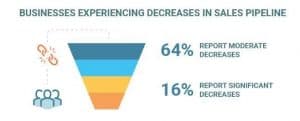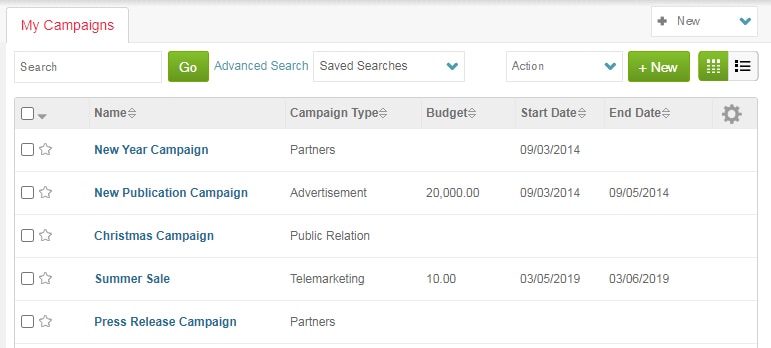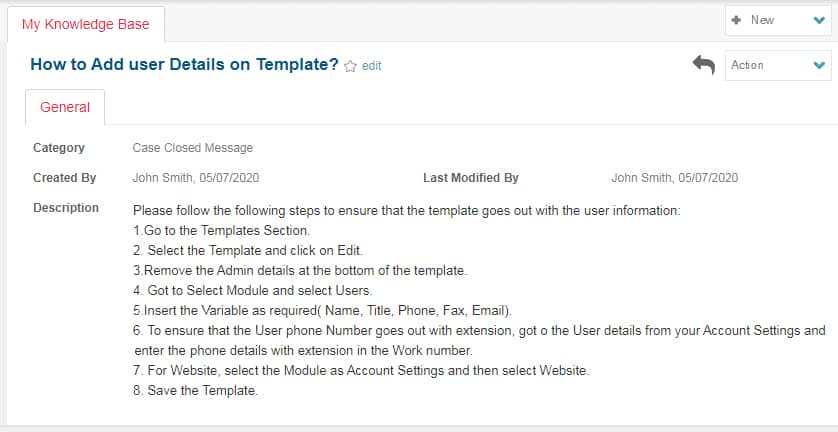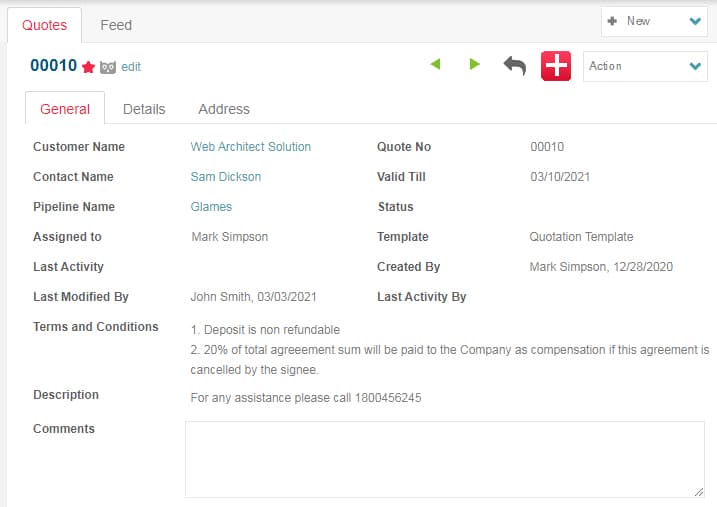Do you know how your sales teams are winning your prospects and making them your customers?
Does your company have a defined process in place to help your teams qualify their leads so that your salespersons can concentrate their resources and time on the most sales-ready leads in the database of your best lead management software?
Are you converting enough MQLs (Marketing Qualified Leads) sent by your marketing teams?
We all know lead conversion is the key to revenue and business growth in any organization.
Therefore, here are a few best practices that you can follow for increasing the lead conversion rate of your best lead management software and expand your business more sustainably.
Do you know how your sales teams are winning your prospects and making them your customers?
Does your company have a defined process in place to help your teams qualify their leads so that your salespersons can concentrate their resources and time on the most sales-ready leads in the database of your best lead management software?
Are you converting enough MQLs (Marketing Qualified Leads) sent by your marketing teams?
We all know lead conversion is the key to revenue and business growth in any organization.
Therefore, here are a few best practices that you can follow for increasing the lead conversion rate of your best lead management software and expand your business more sustainably.

Publish A Blog
Blogging is an excellent means to build trust as according to an article published in Forbes:
“The fact is that in the world of today you cannot become an authority simply by declaring yourself as one. Customers are more suspicious, and they want to see you prove it. By producing quality information that’s true and reliable in every blog, you are making sure that you can become that authority.”
This is because we are all aware that converting leads lies at the end of the sales cycle. However, to get to that point whereby the leads will find enough interest to buy your offerings, you first need to acquire the trust of your leads. Your leads need to see your business as an authority in your space and find enough trust that you can support them and ensure their success after using your offerings.
Therefore, with the help of blogging, you can easily make your leads and prospect get engaged with your business once you can solidify your reputation as a subject matter expert or an authority in their mind, which will eventually lead to a higher lead conversion rate.
Integrate Your CRM Software With A Marketing Automation Platform
Most of the sales teams today use easy to use CRM software platforms to move opportunities through the sales pipeline and win deals.
A CRM database stores a gigantic amount of information about every leads in your best small business CRM software system, which includes behavioral and demographic data of your leads, prospects, and customers.
Therefore, when you use an MA (Marketing Automation) solution in conjunction with your business CRM platform, you can easily pull all that contact data stored in the CRM database to personalize your messages that you send to your prospective leads.
This is because, once you send highly relevant messages to your prospects rather than sending one-size-fits-all general messages to everyone in the database of your best lead management software it helps you to better engage with your prospects and increases the likelihood of conversion, as you make your personalization based on the interests, past buying behaviors, and social media activities of your leads.
However, to do this you must integrate your marketing CRM with an MA system, and let them share data in real-time, or use an all in one CRM which comes with inbuilt sales, marketing, and customer support automation, on a single platform.
Set Up A Lead Scoring System In Your CRM
Lead scoring is a process that helps you to identify the most prospective and sales-ready leads in your CRM software’s database. Using a ‘point system’ that aids in indicating the value every leads and prospect represents to your small business organization, you can very easily hone in on the sales-readiness of your leads.
Using the lead scoring process, in your best small business CRM software you can award (and also deduct) points to leads for the actions they take like visiting your website, clicking and opening your emails, downloading your contents, and others.
Additionally, you can even award points to your leads for demographic data (like job titles).
Now as the scores accumulate over time, you need to set up a scoring threshold at which a lead should be considered as an MQL (Marketing Qualified Lead). When any lead cross that predefined threshold, those leads are then passed over to the sales teams for immediate follow-ups.
Doing this activity aids the sales teams to prioritize their outreach to the most sales-ready leads, and not waste their efforts and time on dead-end leads that are not yet ready to make a purchase.
In other words, lead scoring is a process that improves the quality of your leads.
In a study done by TrackVia in 2018, it was found that 42% of businesses experienced a higher lead conversion rate with lead scoring in their small businesses.
However, it must be remembered that your marketing teams must get buy-in from your sales teams to fine-tune your scoring system and consolidate the alignment between the two teams for developing an effective and successful lead scoring process.
Moreover, you are also advised to reevaluate your lead scoring mechanism once every month since if you find that your marketing teams are passing a lot of MQLs to the sales, of which only a few are getting converted, it can be that you are qualifying your leads to soon. In this case, you must increase the MQL threshold score in your scoring mechanism and fine-tune your lead conversion mapping processes.
Run Lead Generation And Nurturing Campaigns
In order to convert leads, you must primarily generate leads. You can generate leads in many ways, right from using social media to making use of email drip campaigns or even use free lead generation software which you can find in certain lead management software tools.
Now, once you generate new leads, and store them in your CRM platform’s database, you need to nurture the leads through the sales pipeline with a series of touchpoints that will move the leads closer to conversion.
Set Up Killer Landing Pages
As your leads move through the sales pipeline, you need to find a means to capture more information about the leads which will help to increase their engagement with your business over time.
Irrespective of whether you are using an enterprise-level, highly expensive and robust CRM like Salesforce or mostly used by small businesses and startups a Salesforce Alternative CRM software, one of the most effective ways to do this is by creating simple landing pages, with only one objective, to encourage your leads to take an action like register for a webinar, download specific content, request a demo, and others.
Use examples from peers in your industry; check their format, images, contents, and CTA (Call to Action) buttons for creating killer landing pages.
However, always remember to make it amply clear to the visitors in your landing pages, which action you want them to take, how they should take it, and what they will receive in exchange for sharing their personal information with your brand.
When done rightly, using an effective CTA can significantly increase your lead conversion rate.
Incorporate Data Verification
Typically, all landing pages will have forms to collect information about the prospects to store them in the CRM database.
Now, it is also most often found that many people will provide you with false information, like fake email id, or phony mobile numbers to receive your offers.
To avoid this include data verification measures in your lead generation forms, like using reCAPTCHA, and other data verification processes to reduce the accumulation of fake leads in your database, and increase the ability of your sales teams to qualify high-quality leads in the CRM system.
Use Social Monitoring To Find Brand Advocates
Using social CRM which is also known as SCRM software you can practice social listening and social monitoring which will help you to find instant alerts when someone mentions your brand or offerings on the social media platforms.
Therefore, if you find someone speaking positively about your organization or brand and are happy about your products or services, reach out to them to demonstrate your appreciation.
Treating these people with respect and catering to their needs can help you to find brand advocates, those who can be super helpful in promoting your brand and increase conversion rates.
According to a survey done by Nielsen and Forrester Research, it has been found that:
“92% of consumers trust recommendations from brand advocates while only 18% of consumers trust recommendations from industry influencers.”
Routinely Measure Your Lead Conversion Ratio
Routinely measuring your lead conversion ratio aids in keeping track of your efforts. The lead conversion ratio is most essentially the ratio of the number of Marketing Qualified Leads (MQL) that your sales teams have converted to customers over a specific period of time.
Therefore, create and keep a monthly scorecard that can help in tracking these metrics from your easy to use CRM. This is because; maintain insights on how well your lead scoring process is working will aid you to make data-driven decisions, and also find which processes are working and what is broken in the lead conversion workflow.
Takeaway
Lead conversion is what allows you to grow your business. However, you need to carefully plan and execute various tactics to increase your conversion rates.
Therefore, if you are running a small business following the above-stated points and using the best lead management software (which integrates MA and an easy to use CRM), will not only help you automate your lead conversion processes but also aid in streamlining your efforts for rapid business growth.




























